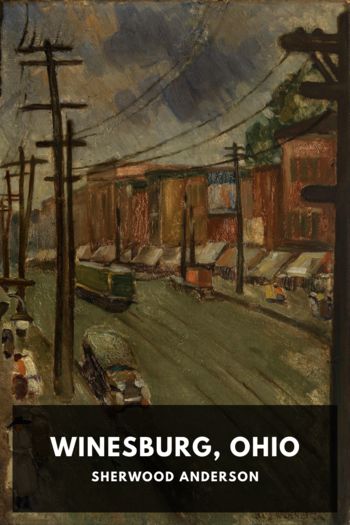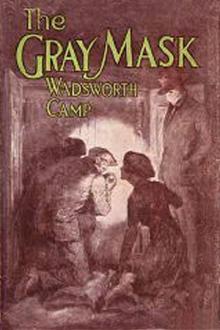the Spy (2010), Cussler Clive [free e reader TXT] 📗

- Author: Cussler Clive
Book online «the Spy (2010), Cussler Clive [free e reader TXT] 📗». Author Cussler Clive
The Spy
Clive Cussler
*
THE GUNNER'S DAUGHTER
Chapter 1
MARCH 17, 1908
WASHINGTON, D.C.
THE WASHINGTON NAVY YARD SLEPT LIKE AN ANCIENT city guarded by thick walls and a river. Old men stood watch, plodding between electric time detectors to register their rounds of factories, magazines, shops, and barracks. Outside the perimeter rose a hill of darkened workers' houses. The Capitol Dome and the Washington Monument crowned it, glittering under a full moon like polar ice. A whistle moaned. A train approached, bleeding steam and clanging its bell.
U.S. Marine sentries opened the North Railroad Gate.
No one saw Yamamoto Kenta hiding under the Baltimore and Ohio flatcar that the locomotive pushed into the yard. The flatcar's wheels groaned under a load of fourteen-inch armor plate from Bethlehem, Pennsylvania. Brakemen uncoupled the car on a siding, and the engine backed away.
Yamamoto eased to the wooden crossties and stone ballast between the rails. He lay still until he was sure he was alone. Then he followed the tracks into the cluster of three-story brick-and-iron buildings that housed the Gun Factory.
Moonlight lancing down from high windows, and the ruby glow of banked furnaces illuminated an enormous cavern. Traveler cranes hulked in shadows overhead. Colossal fifty-ton dreadnought battleship guns crowded the floor as if a fiery hurricane had leveled a steel forest.
Yamamoto, a middle-aged Japanese with threads of gray in his shiny black hair and a confident, dignified manner, wove a purposeful route through the watchmen's prescribed paths, examining gun lathes, machines for rifling, and furnaces. He paid special attention to deep wells in the floor, the brick-lined shrinking pits where the guns were assembled by squeezing steel jackets around fifty-foot tubes. His eye was sharp, refined by similar clandestine tours of Vickers and Krupp-the British and German naval gun factories-and the Czar of Russia's ordnance plants at St. Petersburg.
An old-style Yale lock secured the door to the laboratory storeroom that dispensed supplies to the engineers and scientists. Yamamoto picked it open quickly. Inside, he searched cabinets for iodine. He poured six ounces of the shiny blue-black crystals into an envelope. Then he scrawled crystal iodine, 6 ounces on a requisition sheet with the initials AL for the Gun Factory's legendary chief designer, Arthur Langner.
In a distant wing of the sprawling building, he located the test caisson where armor experts simulated torpedo attacks to measure the awesomely magnified impact of explosions underwater. He rummaged through their magazine. The sea powers locked in the international race to build modern dreadnought battleships were feverishly experimenting with arming torpedoes with TNT, but Yamamoto noted that the Americans were still testing formulations based on guncotton propellants. He stole a silk bag of Cordite MD smokeless powder.
As he opened a janitor's closet to filch a bottle of ammonia water, he heard a watchman coming. He hid in the closet until the old fellow had shuffled past and disappeared among the guns.
Swift and silent, Yamamoto climbed the stairs.
Arthur Langner's drawing loft, which was not locked, was the workshop of an eccentric whose genius spanned war and art. Blueprints for stepped-thread breeches and visionary sketches of shells with smashing effects as yet unheard of shared the workspace with a painter's easel, a library of novels, a bass violin, and a grand piano.
Yamamoto left the Cordite, the iodine, and the ammonia on the piano and spent an hour studying the drafting tables. Be Japan's eyes, he preached at the Black Ocean Society's spy school on the rare occasions that duty allowed him home. Take every opportunity to observe, whether your ultimate mission is deception, sabotage, or murder.
What he saw frightened him. The 12-inch guns on the factory floor could throw shells seven miles to pierce ten inches of the newest face-hardened side armor. But up here in the drawing loft where new ideas were hatched, the Americans had preliminary sketches for 15-inch guns and even a 16-inch, seventy-foot-long monster that would hurl a ton of high explosives beyond the curve of the Earth. No one knew yet how to aim such a weapon when the distances were too great to gauge range by spotting the splashes of near misses. But the bold imagination that Yamamoto saw at work warned him it was only a matter of time before America's New Navy invented novel concepts for fire control.
Yamamoto stuffed a wad of paper money in the gun designer's desk-fifty twenty-dollar U.S. gold certificates-considerably more than what one of the arsenal's skilled workmen earned in a year.
Already the U.S. Navy was third only to England's and Germany's. Its North Atlantic Fleet-brazenly rechristened the Great White Fleet-was showing the flag in a swaggering voyage around the world. But Britain, Germany, Russia, and France were not America's enemies. The true mission of the Great White Fleet was to threaten the Empire of Japan with naked steel. America aimed to command the Pacific Ocean from San Francisco to Tokyo.
Japan would not allow it, Yamamoto thought with a prideful smile.
It was only three years since the Russo-Japanese War spawned in blood a new master of the Western Pacific. Mighty Russia had tried to strong-arm Japan. Today the Empire of Japan occupied Port Arthur. And Russia's Baltic Fleet lay under three hundred feet of water at the bottom of the Tsushima Strait-thanks in no small part to Japanese spies who had infiltrated the Russian Navy.
As Yamamoto closed the drawer on the money, he had the eerie sensation of being watched. He looked across the desk into the bold gaze of a beautiful woman whose photographic portrait stood in a silver frame. He recognized Langner's dark-haired daughter and admired how faithfully the photographer had captured her compelling eyes. She had inscribed it in a flowing hand For Father, the gunner' who dreads nought'!
Yamamoto turned his attention to Langner's bookshelves. Bound volumes of patent applications vied with novels for the space. The applications filed recently had been written on a typewriter. Yamamoto pulled volume after volume, working his way back to the last year that applications were submitted in longhand. He spread one on the designer's desk, then





Comments (0)